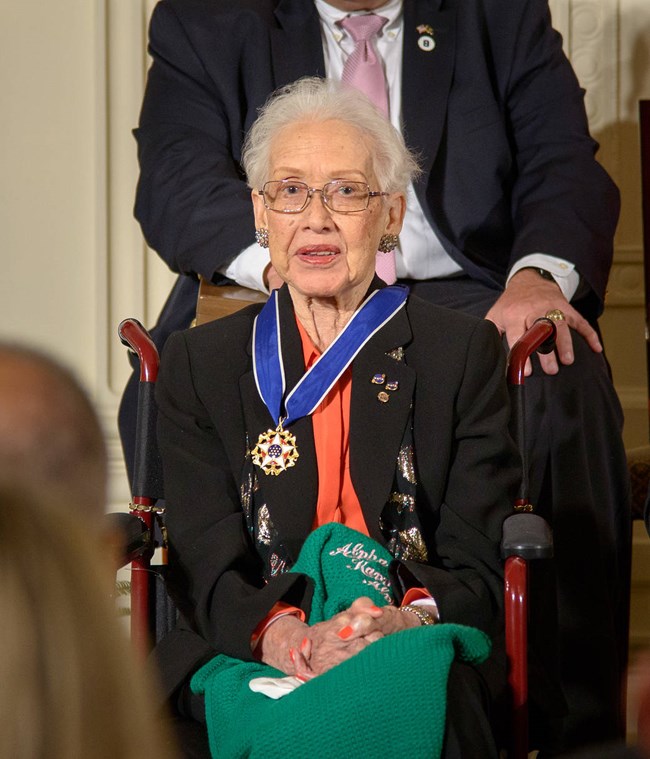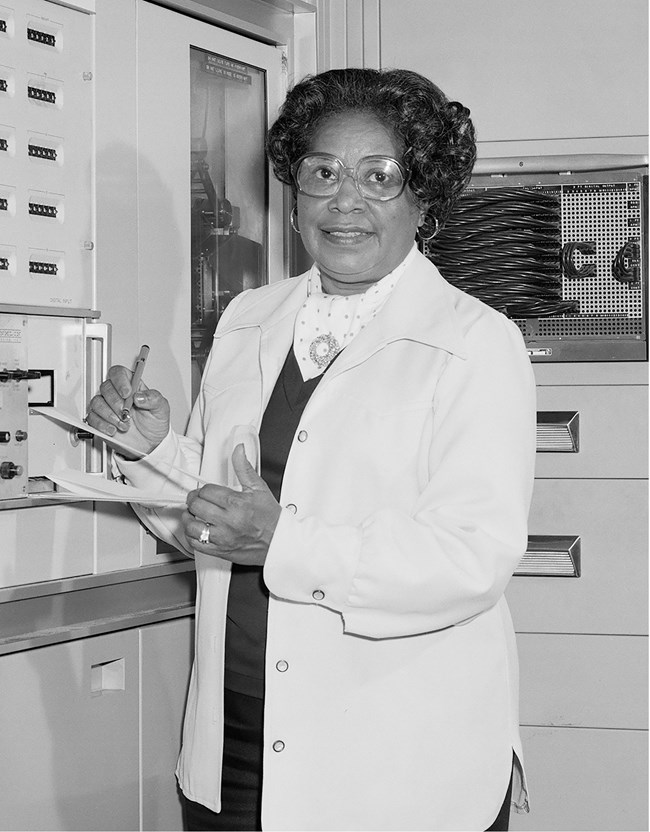Part of a series of articles titled Curiosity Kit: Black Women Mathematicians in Aeronautics.
Article
Learning From Black Women Mathematicians at NASA

This Curiosity Kit Educational Resource was created by Katie McCarthy, a NCPE intern with the Cultural Resources Office of Interpretation and Education.
Background:
Beginning in the 1930s, the National Advisory Committee for Aeronautics (NACA) hired white women to process data and solve complex math equations. These women were called computers; to compute means to calculate or solve a math problem. Female computers did this work by hand. NACA began to hire Black women during World War II. NACA, and its successor, the National Aeronautics and Space Administration (NASA) were racially segregated until 1958. Even when the administration began to desegregate its facilities, Black women still faced discrimination and were not given the same opportunities and promotions as white men or women. Still, Black women computers played a critical role in putting humans in space and returning them to Earth. In 2017, some of these women were featured in the film Hidden Figures. You can find out more about the Black women who worked at NASA during the 1950s and 1960s by exploring the Places of Hidden Figures.
Objectives:
-
Learn about the women who work at NASA, both past and present.
-
Identify and recognize “hidden figures” in your own community.
-
Develop and practice writing skills through short and/or medium-length writing activities.
Inquiry Question:
How do we challenge societal assumptions of our abilities (or the abilities of others) based on gender or race?

Activity One:
During the 1950s and 1960s, NACA and then NASA hired women to process the data required by male engineers. However, many of these women wanted to be engineers themselves and fought to be promoted. Today, NASA hires women as engineers and scientists at all levels of the administration. You can learn more about some of these women at Women@NASA and Women@JPL. Pick one of them and answer the following questions about her career.
-
How did this woman become interested in space science or working at NASA?
-
When did this woman join NASA? What kind of jobs has she had at NASA?
-
Where did this woman go to school? What did she study?
-
Did she have any particular friends, teachers, or mentors who helped her along the way?
-
What kinds of challenges did she have to overcome?
-
What surprised you about her story?
Activity Two:
The women featured in the book and movie Hidden Figures were “hidden” because the public did not know about their contributions for a long time. We all have hidden figures in our lives; people who help us and make our lives better, but sometimes don’t get the recognition they deserve. Who might be the hidden figures in your life? It might be someone like a bus driver, janitor, teacher, family member, or friend. Once you identify who the hidden figures are in your life, write them a thank you card to recognize how they help you. In your card, make sure to share what you are thankful for, why you appreciate their actions, and how they help.
Activity Three:
The Places of Hidden Figures shares short biographies of seven of the women who worked at NACA and NASA beginning in the 1950s. Biographies help us learn about people who we don’t know personally. Biographies are sometimes about people in the past, but can also be about people who are alive today! When you write a biography about yourself, it is called an autobiography. In this activity you’ll have a chance to write your own autobiography. As you think about what to write, consider the following ideas:
-
When and where were you born?
-
Where have you lived?
-
Who are your family members? Who are your friends and people in your community? How have they impacted and influenced you?
-
What are the things you like to do? What interests you? What inspires you?
-
What kinds of challenges do you face? What kinds of challenges have you faced in the past?
-
What is one time when you challenged someone’s expectation about you?
-
What are some big important moments in your life?
-
What are you hopeful for about the future?
Places of Hidden Figures: Black Women Mathematicians in Aeronautics and the Space Race and this educational resource were inspired by the Hidden Figures movie, and the book it was based on:
Theodore Melfi, Director. Hidden Figures. Fox 2000 Pictures, 2017.
Margot Lee Shetterly, Hidden Figures: The American Dream and the Untold Story of the Black Women Who Helped Win the Space Race, 2016.
Tags
- nasa
- women’s history
- women's history
- african american history
- african american women
- space
- space science
- space exploration
- women and science
- women in engineering
- teaching with historic places
- twhp
- educational activity
- women in science and technology
- curiosity kit
- virginia
- virginia history
- twhplp
- science
Last updated: March 31, 2023
